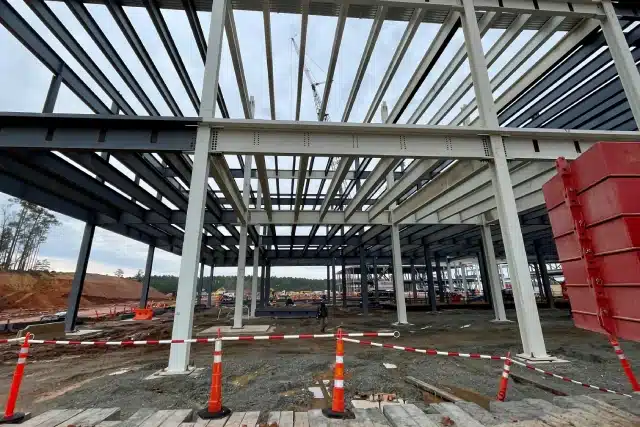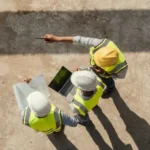Construction sites are fast-paced, ever-changing environments where multiple tasks occur simultaneously, often involving heavy machinery, complex processes, and large teams. In such high-risk settings, safety must be a top priority. One of the most effective ways to identify and mitigate potential hazards is through Job Hazard Analysis (JHA). This proactive approach requires supervisors and managers to evaluate each task systematically, anticipate potential risks, and implement preventive measures. When integrated into a comprehensive safety program, JHAs help create a safer work environment by addressing hazards before they lead to accidents or injuries.
Understanding Job Hazard Analysis (JHA):
Job Hazard Analysis (JHA), or Job Safety Analysis, is a systematic process that identifies potential hazards associated with a specific job or task. The primary goal of JHA is to assess and address potential risks before they result in accidents or injuries. By breaking down a job’s essential steps and analyzing associated hazards, construction teams can develop effective safety measures to protect workers and minimize the likelihood of accidents.
The Steps of Job Hazard Analysis:
Make a Plan:
The first step in a Job Hazard Analysis (JHA) is to develop a clear plan by gathering your team and identifying which jobs require analysis. Start by selecting a diverse group of employees, including those with firsthand experience performing the tasks, supervisors, and safety personnel. You lay a strong foundation for a thorough and effective JHA by involving the right people and focusing on high-risk jobs.
Job Identification:
The next step in JHA involves identifying the job or task that needs analysis. Priority should go to jobs with the highest risk of injury, jobs with the potential to cause severe injuries, and complex jobs or even jobs where one simple error could be catastrophic. Each job is unique, and recognizing the specifics is crucial for an accurate hazard analysis.
Break Down the Job:
Once the job is identified, it is broken down into individual steps or components. This detailed breakdown allows for a comprehensive examination of each phase, making pinpointing potential hazards associated with specific actions easier. Consider each step of the job and look at the hazards involved in each step, such as slips, trips, falls, heat, temperatures, noise, struck by, caught on, crush, electrical contact, elevated heights, weather conditions, or ergonomic hazards, to name a few. Encourage workers to share ideas and contribute to the process of each step involved in their job since they are the experts at their particular task. Check with multiple workers to gain a broader perspective. Taking photos or videos of each step may help with the process.
Identify and Describe Potential Hazards:
For each step of the job, potential hazards are identified. Hazards can be categorized into various types, including physical, chemical, biological, ergonomic, and psychosocial. This step requires a keen understanding of the work environment and the nature of the tasks.
Assess the Risks:
After identifying hazards, the next step is assessing the associated risks. This involves evaluating the likelihood of an incident and the severity of potential consequences. Ask questions such as: What causes each hazard? What other factors could contribute to an incident or injury? What is the worst-case scenario? How could equipment be damaged? Risks are often rated on a scale, allowing action prioritization based on urgency.
Develop Control Measures:
With a clear understanding of identified hazards and associated risks, the focus shifts to developing control measures. These measures are proactive steps taken to eliminate or mitigate risks. They can include implementing engineering controls, providing personal protective equipment (PPE), or altering work processes to enhance safety. An outside safety professional can help evaluate and recommend additional controls to improve construction site safety.
Implement and Communicate:
Once established, control measures must be implemented across the construction site. Effective communication is key during this phase, ensuring that all workers know the identified hazards and the measures to address them.
Review your Job Hazard Analysis
Review your JHA with employees performing the work. Update with new information as needed and whenever there is a change in the job. A periodic review is recommended, as new hazards may be found each time a JHA is performed.
Benefits of Implementing JHA in Construction Site Safety:
Accident Prevention:
JHA serves as a proactive tool for accident prevention. By identifying and addressing potential hazards before they escalate, construction sites can significantly reduce the occurrence of accidents and injuries.
Increased Worker Awareness:
Engaging in the JHA process enhances worker awareness of the specific risks associated with their tasks. This increased awareness leads to a more safety-conscious workforce that actively participates in maintaining a safe work environment.
Cost Savings:
Job Hazard Analyses (JHAs) help companies save costs by proactively identifying and mitigating workplace hazards before they lead to injuries. By systematically assessing tasks, JHAs reduce the likelihood of accidents, minimizing workers’ compensation claims, medical expenses, and lost productivity. A well-implemented JHA program can also lower insurance premiums. Additionally, preventing injuries helps maintain an efficient workforce, reducing the need for costly retraining or hiring temporary replacements. Investing in JHAs ultimately translates into significant financial savings while fostering a safer, more productive work environment.
Regulatory Compliance:
Many regulatory bodies require construction sites to conduct hazard assessments as part of their safety protocols. Implementing JHA ensures compliance with these regulations, avoiding legal issues and potential fines.
Continuous Improvement:
JHA is not a one-time process but rather a continuous cycle of improvement. As construction sites evolve, new hazards may emerge. Regularly revisiting and updating JHA allows for ongoing risk management and continuous improvement of construction site safety.
Job Hazard Analysis is a fundamental tool for improving construction site safety. Its systematic approach to identifying, assessing, and mitigating potential hazards empowers construction teams to create a safer working environment. By prioritizing safety through JHA, construction sites can comply with regulations and foster a culture of awareness and continuous improvement. As the industry embraces these proactive measures, the overall well-being of construction workers and the prevention of accidents become top priorities in pursuing successful project completion. If you need assistance implementing a comprehensive safety program, contact Safety Consulting Specialists first. With decades of experience in construction site safety, we provide expert guidance, site audits, and tailored safety solutions to help you protect your workforce and stay compliant.


